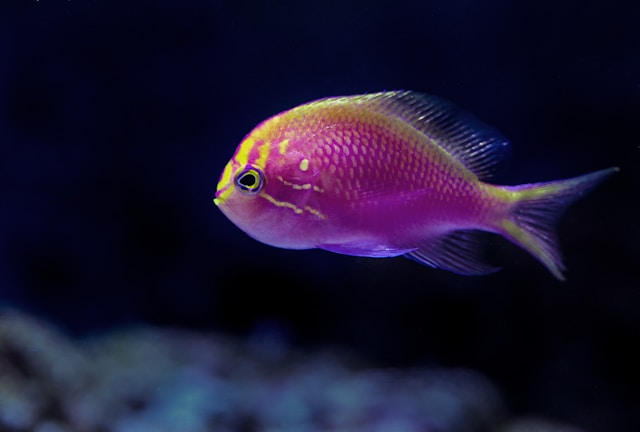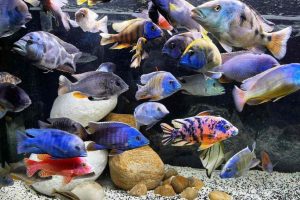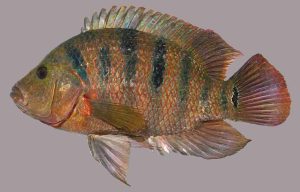The tropical fish export industry plays a significant role in the global economy, supplying fish not only for food but also for ornamental purposes in aquariums worldwide. However, with increasing concerns about climate change and environmental degradation, it’s clear that traditional methods of fish exportation carry a heavy carbon footprint.
This article aims to explore actionable strategies for reducing carbon emissions in tropical fish exports, offering insights to industry professionals and eco-conscious readers alike.
What Is the Carbon Footprint in Fish Exports?
When we talk about the carbon footprint in fish exports, we’re referring to the total greenhouse gas emissions generated during the entire supply chain, from farm to destination. This includes energy use in aquaculture farms, emissions from transportation, and the environmental costs of packaging.
For instance, transportation alone, especially airfreight, contributes significantly to the carbon footprint due to the fuel required to ship live fish across vast distances. The energy used in maintaining optimal conditions for fish during transit (such as refrigeration or aeration) further adds to emissions. Beyond that, conventional plastic packaging materials, often non-biodegradable, also exacerbate the environmental impact.
Challenges Facing Eco-friendly Fish Exports

Transitioning to eco-friendly fish export practices is not without its challenges. One of the primary hurdles is the cost of implementing sustainable solutions, whether it’s investing in green technologies or switching to renewable energy sources. Additionally, many exporters face logistical constraints—optimizing routes for lower emissions may conflict with delivery timelines critical for keeping live fish healthy during transit.
On a broader scale, the industry has historically struggled with overfishing and resource depletion. By focusing on unsustainable practices, we not only risk degrading marine environments but also hurt long-term profitability by depleting the very resources upon which the business depends.
Adapting to sustainable aquaculture practices is essential, but it can be daunting for companies operating on tight margins.
The Importance of Reducing Carbon Footprint in Tropical Fish Exports
Reducing the carbon footprint in tropical fish exports is more than just a regulatory requirement or a way to improve brand image. It’s a necessity for the survival of the industry. As climate change accelerates, marine ecosystems face unprecedented challenges, from coral bleaching to changing water temperatures that disrupt fish populations. This not only threatens biodiversity but also the livelihoods of those involved in the tropical fish trade.
By adopting sustainable practices, exporters can ensure the long-term viability of their businesses. More importantly, there is a growing demand from both consumers and regulatory bodies for eco-friendly products. This is not a fleeting trend—today’s consumers are increasingly interested in the environmental impact of the products they buy, and they expect transparency and responsibility from businesses.
Read: Troubleshooting Common Cichlid Fish Problems: Solutions and Tips
Strategies for Reducing the Carbon Footprint in Fish Exports
1. Sustainable Fish Farming Practices
One of the most impactful ways to reduce emissions is by adopting sustainable aquaculture practices. Fish farms that rely on renewable energy sources such as solar or wind power significantly lower their carbon footprint. Additionally, innovative techniques like Recirculating Aquaculture Systems (RAS), which recycle water, and Integrated Multi-Trophic Aquaculture (IMTA), where different species co-exist and support each other’s growth, offer eco-friendly alternatives to traditional farming methods.
Feed innovation is another area of focus. For example, switching from traditional fishmeal to plant-based or insect-based feed can reduce the pressure on wild fish stocks and lower emissions from fish farming.
2. Energy-efficient Transportation Solutions
The transportation phase is a major contributor to the carbon footprint in the tropical fish trade. One effective strategy is to optimize shipping routes to minimize the distance traveled and reduce fuel consumption. Some companies have also started using eco-friendly vehicles, including electric or hybrid trucks, to transport fish from farms to ports.
Cold-chain optimization—ensuring that refrigeration and aeration systems are energy-efficient—is another key tactic. Shipping fish in insulated containers that maintain stable temperatures can significantly reduce energy consumption compared to traditional refrigeration methods.
3. Eco-friendly Packaging and Materials
Packaging materials represent a significant environmental burden, especially in the case of single-use plastics. By switching to biodegradable packaging or reusable containers, exporters can reduce waste and the carbon emissions associated with packaging production. For instance, some companies have experimented with seaweed-based packaging or bioplastics, both of which decompose naturally and don’t contribute to the ever-growing problem of plastic pollution.
Reducing the use of single-use plastics is particularly important, as these materials not only take centuries to break down but also contribute to marine pollution.
Read: Cichlid Fish Care Guide
The Role of Technology in Reducing Emissions

1. Smart Sensors and Data Analytics
Technology plays a pivotal role in optimizing processes and minimizing carbon footprints in fish exports. The use of smart sensors and Internet of Things (IoT) devices allows aquaculture operators to monitor everything from water quality to energy consumption in real time. By gathering data on these parameters, farmers can optimize their operations to use fewer resources, thus reducing emissions.
For transportation, data analytics can help optimize shipping routes, leading to shorter delivery times and lower fuel consumption. Predictive analytics can even forecast the most energy-efficient times to ship products based on factors like weather conditions and port traffic.
2. Carbon Capture and Offsetting Initiatives
Another avenue to explore is carbon capture technologies. While still in the early stages, carbon capture devices could potentially be integrated into various stages of the fish export process to trap and store emissions before they are released into the atmosphere. In the meantime, many companies are turning to carbon offsetting initiatives—investing in projects such as marine conservation or renewable energy development to counterbalance their emissions.
Case Studies: Successful Eco-friendly Fish Export Initiatives
There are already notable examples of regions and companies that have successfully implemented eco-friendly fish export practices. Take, for example, the Mekong Delta, where aquaculture companies have adopted sustainable farming methods to reduce their environmental impact. By integrating renewable energy and innovative farming techniques, these companies have not only reduced their emissions but also improved the health and yield of their fish stocks.
Another success story comes from exporters who have embraced smart shipping technologies, cutting their fuel use by optimizing routes and utilizing more efficient refrigeration systems.
Future Trends in Sustainable Fish Exports
Looking forward, several trends promise to reshape the landscape of sustainable fish exports. Lab-grown seafood is emerging as a viable alternative, with the potential to drastically reduce the carbon footprint of fish production. Additionally, the use of blockchain technology is gaining traction as a way to ensure transparency throughout the supply chain, allowing consumers and regulators alike to track the environmental impact of each stage in the fish’s journey from farm to table.
As more countries adopt stricter environmental regulations and carbon taxes, exporters will be further incentivized to adopt eco-friendly practices.
Conclusion
Reducing the carbon footprint in tropical fish exports is not only crucial for the environment but also makes good business sense. By adopting sustainable practices, investing in technology, and exploring innovative transportation and packaging solutions, exporters can stay ahead of regulatory demands while appealing to the growing base of eco-conscious consumers.
The future of fish exports lies in sustainability, and it’s up to the industry to take the necessary steps today. Join the movement towards a greener future in tropical fish exports—our oceans and future generations depend on it.






